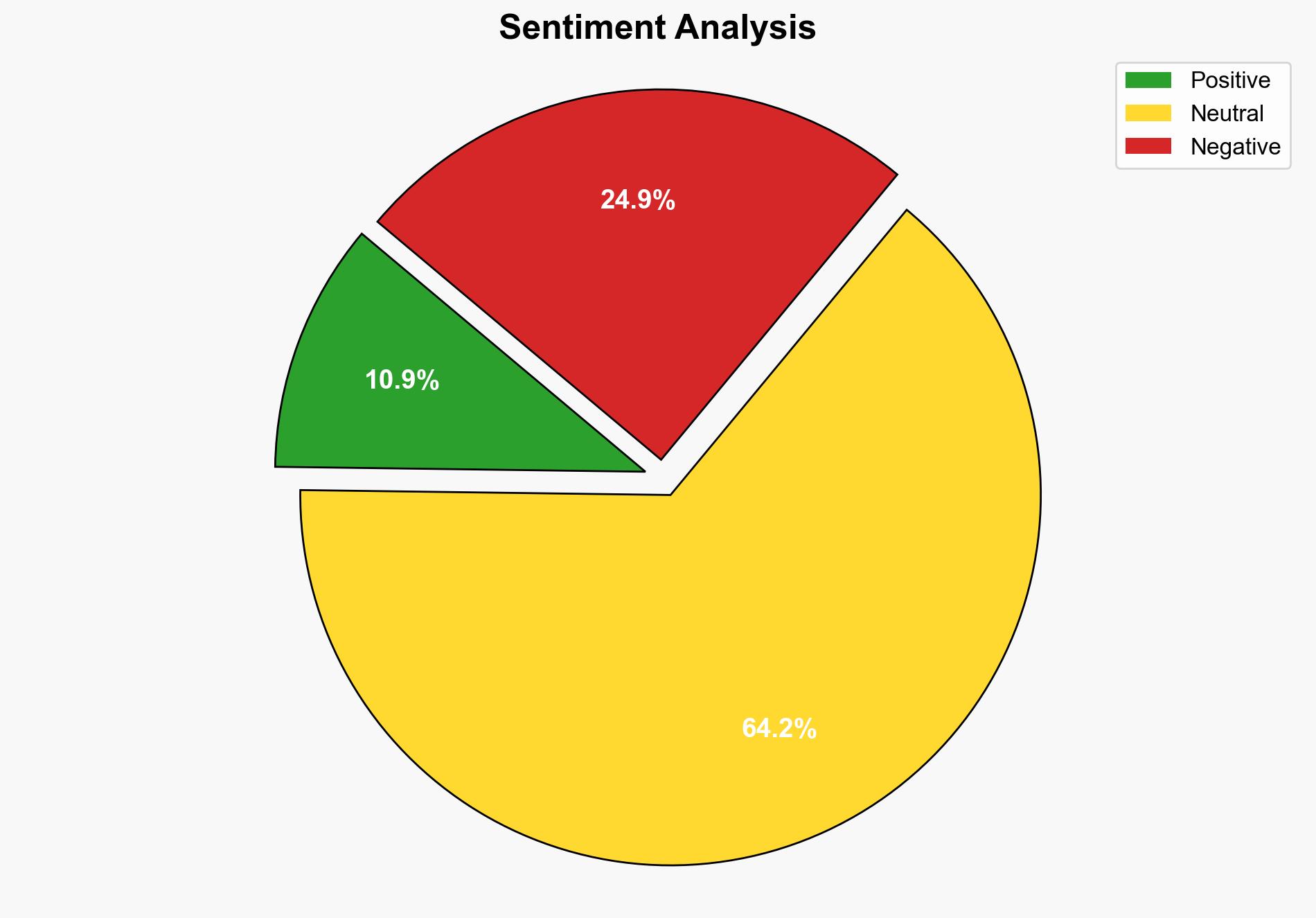Israeli report Only 25 of Hamas tunnels destroyed after months of war – Globalsecurity.org
Published on: 2025-04-12
Intelligence Report: Israeli report Only 25 of Hamas tunnels destroyed after months of war – Globalsecurity.org
1. BLUF (Bottom Line Up Front)
The Israeli military’s campaign against Hamas in Gaza has resulted in significant casualties but has achieved limited success in dismantling Hamas’ tunnel network. Only 25% of the tunnels have been destroyed, and Hamas retains substantial military capabilities. Despite heavy losses, Hamas has replenished its fighter ranks and maintains strong support in Gaza. The ceasefire agreement has been violated, leading to renewed hostilities. Strategic recommendations include diplomatic engagement and reassessment of military strategies.
2. Detailed Analysis
The following structured analytic techniques have been applied for this analysis:
General Analysis
The Israeli military operations have inflicted heavy casualties, with over 50,000 reported deaths. However, the destruction of only 25% of Hamas’ tunnel network indicates a significant gap in achieving strategic military objectives. Hamas’ ability to maintain weapon production and recruit new fighters suggests resilience and adaptability. The ceasefire violations highlight ongoing tensions and the fragility of peace efforts.
3. Implications and Strategic Risks
The limited success in neutralizing Hamas’ infrastructure poses risks to regional stability and Israeli national security. The continued military capabilities of Hamas could lead to prolonged conflict, affecting economic interests and humanitarian conditions in Gaza. The failure to secure a lasting ceasefire exacerbates these risks, potentially leading to further escalation.
4. Recommendations and Outlook
Recommendations:
- Engage in diplomatic efforts to strengthen and extend the ceasefire agreement, reducing the likelihood of renewed conflict.
- Reassess military strategies to effectively target and dismantle Hamas’ tunnel network and other military capabilities.
- Enhance intelligence-sharing and cooperation with regional partners to improve operational effectiveness.
Outlook:
Best-case scenario: Successful diplomatic negotiations lead to a stable ceasefire, reducing hostilities and allowing for humanitarian aid to reach affected populations.
Worst-case scenario: Continued violations of the ceasefire result in escalated conflict, increasing casualties and destabilizing the region further.
Most likely scenario: Sporadic clashes persist, with intermittent diplomatic efforts failing to achieve a long-term resolution.
5. Key Individuals and Entities
The report references significant individuals and organizations, including Hamas, al-Qassam Brigades, and the Israeli military. These entities play crucial roles in the ongoing conflict and are central to any strategic assessments and recommendations.




